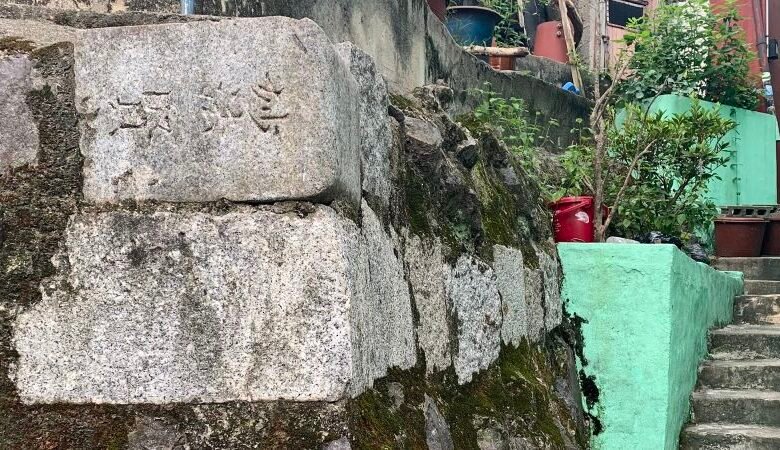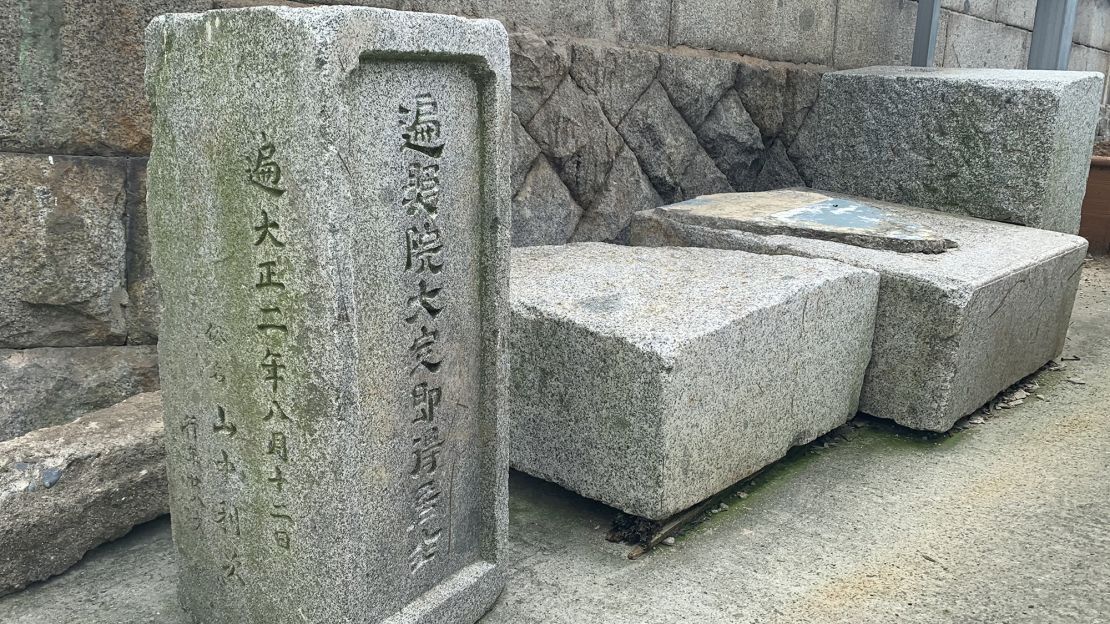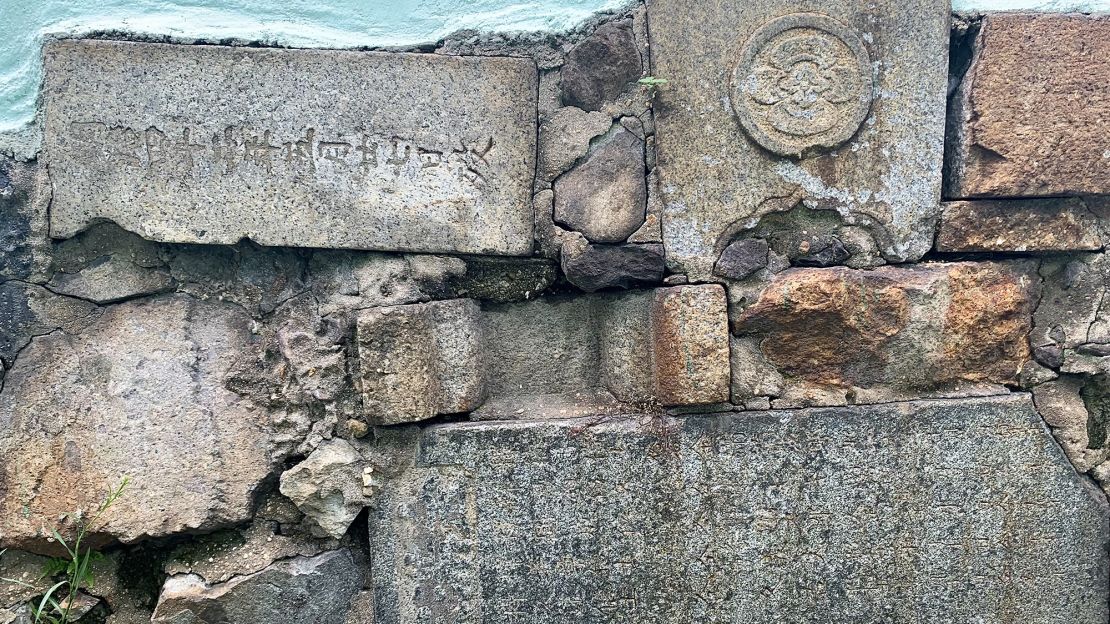Ami-dong: Busan’s ‘tombstone village’ built by Korean refugees on a Japanese cemetery

Editor’s notice: Monthly ticket It’s the CNN journey chain that highlights among the most great themes on the earth of journey. In October, we transfer our focus to the anomalous, and we spotlight every part from the inhabited (alleged) areas to the abandoned locations.
Busan, South Korea
CNN
–
At first look, Ami-Dong appears like an atypical village contained in the South Korean metropolis of Busan, with coloured homes and slender alleys towards the mountains that wave on the horizon.
However when correct inspection, guests might uncover uncommon constructing supplies included within the foundations of properties, partitions and sharp stairs: graves are engraved with Japanese figures.
Amion, which was additionally referred to as Tombstone Cultural Village, was constructed in the course of the depths of the Korean battle, which erupted in 1950 after North Korea invaded the south.
The battle has displaced enormous numbers of individuals all through the Korean Peninsula – together with greater than 640,000 North Koreans who cross parallel 38 by dividing the 2 international locations, in accordance with Some estimates.
Inside South Korea, many voters additionally fled to the south, away from Seoul and the entrance strains.

Many of those refugees went to Busan, on the southeastern coast of South Korea – one of many solely two cities who weren’t arrested by North Korea in the course of the battle, and the opposite is Daiju 88 km (55 miles).
Busan has turn into a short lived capital of the time of battle, as UN forces are constructing an setting all through town. Its relative safety – and its fame as a uncommon checklist towards the northern military – made Busan a “enormous metropolis of refugees and the final stronghold of the Nationwide Authority,” he mentioned. The official website of the city.
However the brand new arrivals discovered themselves with an issue: discovering a spot to reside in. The area and assets have been uncommon with Busan’s extension to its borders to accommodate the movement.
Some discovered their reply in Ami-Dong, a Holocaust and a cemetery situated on the foot of the Busan Mountainand It was designed throughout Japan’s occupation of Korea from 1910 to 1945. This era of colonial rule – and Japan’s use of sexual slaves in wartime brothels – is among the fundamental historic elements behind the 2 international locations ” A bitter relationship to this day.
Throughout that colonial interval, the flat areas have been developed in Busan and town middle subsequent to the ocean ports as Japanese lands, in accordance with what it mentioned. article Within the official customer’s information to town’s authorities. In the meantime, poor employees settled at house, by the mountains-where the Cemetery of Ami Dong included the ashes of the Japanese lifeless.
The graves bears the names, birthdays and dates of the dying of the deceased, engraved in Kanji, Herragana, Katakana and different types of the Japanese textual content, in accordance with Paper 2008 Written by Kim Younger Ha of the College of Korea Naval.
However the cemetery space was Left After the tip of the Japanese occupation, in accordance with town’s guests – and when the refugees have been immersed after the beginning of the Korean battle, these graves have been dismantled and used to construct a thick group of huts, which finally creates a small “village” in what may turn into Metropolis Metamah.

“In an pressing state of affairs, when there was no land, there was a cemetery there and it appeared that folks felt that they needed to reside there,” mentioned Kong Yun Kyung, a professor of city engineering at Busan Nationwide College.
Former refugees described an interview in Kim paper in 2008-many aged individuals on the time, calling their childhood recollections within the Amdi Dong-tearing the partitions of the cemetery and eradicating the graves of graves to be used in building, and infrequently eliminate ash on this course of. The area has turn into a middle for society and survival, as refugees tried to assist their households by promoting items and providers in Busan markets, in accordance with Kim.
He wrote within the newspaper: “Ami Dong was the border between life and dying for the Japanese, the borders between the agricultural and concrete areas of the migrants, and the borders between her hometown and a international place for refugees,” he wrote within the newspaper.
The armistice signed on July 27, 1953 stopped the battle between the Koreans – however the battle was not formally ended There was no peace treaty. After that, many refugees left in Busan to resettle them elsewhere – however others remained, as town turned an financial revival middle.
Busan appears utterly completely different as we speak, as a flourishing trip vacation spot. In Ami-Dong, many homes have been restored over time, some carry contemporary coats of sunshine inexperienced paint.
However the stays of the previous stay.
Strolling throughout the village, the graves of the graves will be monitored below the edge of the door and the steps, and on the corners of the stone partitions. Outdoors of some properties, they’re used to assist fuel cylinders and flower utensils. Though some nonetheless bear clear inscriptions, others have survived time, the textual content is now not learn.

The advanced historical past of the village – on the similar time an emblem of colonialism, battle and immigration – can also be waving creativeness. Over time, the inhabitants reported observations of what they thought have been the ghosts of the Japanese deceased, describing the characters carrying the Kimono that seems and disappeared, as Kim wrote.
He added that folklore displays the favored perception that the souls of the lifeless are linked to the preservation of their ashes or their stays, which have been disturbed within the village.
The Busan authorities has made efforts to take care of this a part of its historical past, as Ami-Dong is now a vacationer attraction subsequent to the well-known village of Gamcheon Tradition, which will be accessed by buses and personal vehicles.
The Ami-Dong entrance middle offers a short introduction, in addition to a map of the situation of essentially the most distinguished graves. A number of the partitions have been drawn with footage of the graves of the graves in reference to the roots of the village – though many indicators additionally required guests to be calm and respectable, given the inhabitants who nonetheless reside within the area.
Whereas leaving the village, she reads a mark on the primary street: “There’s a plan to construct (A) a memorial place sooner or later after gathering graves scored in all places.”
2022-10-04 01:35:00





